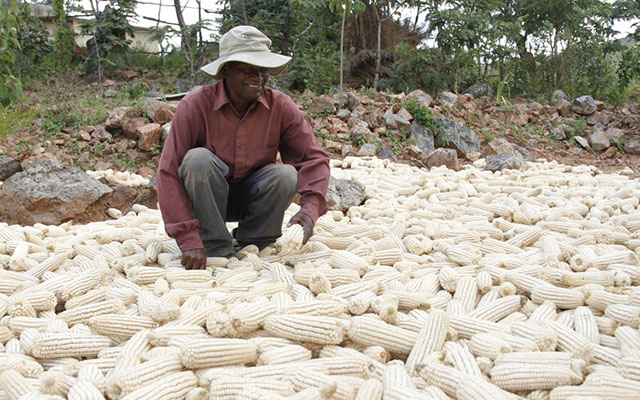Sifting facts from CCC’s debris of misinformation

Ranga Mataire Group Political Editor
IN the aftermath of the 26 March by-elections, many observers, particularly those outside Zimbabwe, have fallen victim to misleading information.
The most misleading has been from the CCC, an offshoot of the MDC party, whose messaging has been targeted at cushioning its lukewarm performance in the by-election.
The CCC entity has been pushing the narrative of a victor, while trying to bury the data that shows the real facts; the party is losing ground in areas that were previously regarded as opposition fortresses.
Why were the March 26, 2022 elections called?
Here is the necessary background to help those not familiar with developments prior to the actual voting.
The number of National Assembly seats that were up for grabs were 28 and those for local councils were 122. Most parliamentary seats under contest had been won in 2018 by the opposition MDC Alliance under Nelson Chamisa.
Seats in the National Assembly and local authorities had arisen mostly because of disagreements within the MDC Alliance party that led to the expulsion of some members.
In January 2022, Chamisa rebranded to CCC, and contested in all the vacant seats in the by-elections.
What happened during campaigns?
Save for the Kwekwe violence at a CCC rally, to which police promptly responded with arrests, there were no reports of clashes of political parties.
As per tradition, the opposition led by CCC and shadowy internet activists cast aspersions on the Zimbabwe Electoral Commission (ZEC). This was predictable. It is a ploy meant to pre-empt any possible poor showing in the elections, by whipping up emotions using false claims.
How is the outcome being presented?
In presenting the results, the CCC is simply rushing to say it won 19 seats.
Embedded media outlets have celebrated what they call a “win” for their favourite party, which they even describe as “new”. What they have ignored is the data.
Firstly, the party lost two House of Assembly seats that they previously held, in Epworth and Mutasa South. They also gave up council seats in urban areas, most notably two in Victoria Falls and one in Mabvuku-Tafara.
Secondly, what those outside observers are not being told is this; where CCC won in their strongholds, they won by reduced margins. Where they lost in ZANU PF strongholds, they lost big.
For example, in St Mary’s, ZANU PF had 42,4 percent of the valid vote. This was up from 29,5 percent in 2018 in that constituency.
The numbers show the reality. It is ZANU PF which has gained, while the opposition has lost. While the opposition lost two of its seats, ZANU PF has added to its already strong Parliamentary majority.
Thirdly, ZANU PF consolidated its win in Tsholotsho South, where the opposition expected to win. They expected to win not because they had done any work there; they expected to win because they believed their own propaganda, such as using out-of-context rally pictures.
That ZANU PF has consolidated its two-thirds majority in Parliament, and that the gap has been reduced between the opposition and the ruling party in urban areas, is a bad omen for the CCC ahead of the 2023 national vote.
Dangerous fabrications
There is an attempt by the CCC entity to present themselves as an underdog that “triumphed” with little financial resources. We thank CCC’s vice president Tendai Biti for exposing this lie.
After the elections, he posted his thanks to those that he called “our foreign friends” for their assistance.
“Our great ‘mazvita’ (thanks) to our amazing friends from outside . . . without you there wouldn’t have been this solid campaign,” Biti wrote.
Online campaigns to raise money for CCC were, clearly, merely a distraction, and it is no wonder that there has since been public bickering over how the funds were used.
It is also not true that the fight in the by-election was between ZANU PF and CCC. It was more a fight between Douglas Mwonzora’s MDC Alliance and the CCC. Since it was Mr Mwonzora who had triggered the recalls, which forced the by-elections, the CCC had a gripe with him, and not ZANU PF.
This is why, after the announcement of the results, CCC officials immediately posted more about Mr Mwonzora’s dismal losses than they did about ZANU PF.
For ZANU PF, this was like a fortunate hunter that came away with the meat after finding sibling predators fighting over prey.
2023 Outlook
ZANU PF’s resurgence in urban areas has much to do with a deliberate policy shift undertaken by President Mnangagwa through his Urban Renewal initiative.
The Urban Renewal initiative has seen the Government directly intervening in refurbishing roads, building of accommodation for civil servants, drilling boreholes to deal with the perennial shortage of water and the introduction of affordable transportation through ZUPCO.
Voters are beginning to awaken to the mediocrity of opposition councillors who have literally run down most urban areas in pursuit of personal greed.
After years of denying responsibility, CCC’s secretary general Charlton Hwende recently admitted to his party’s dereliction of duty.
On a Twitter Space discussion, Hwende said councillors had no excuse not to collect garbage in areas they control. He finally put to rest allegations of government interference in the affairs of local authorities.
The numbers are telling. One party should be worrying, and it is not ZANU PF.







Comments